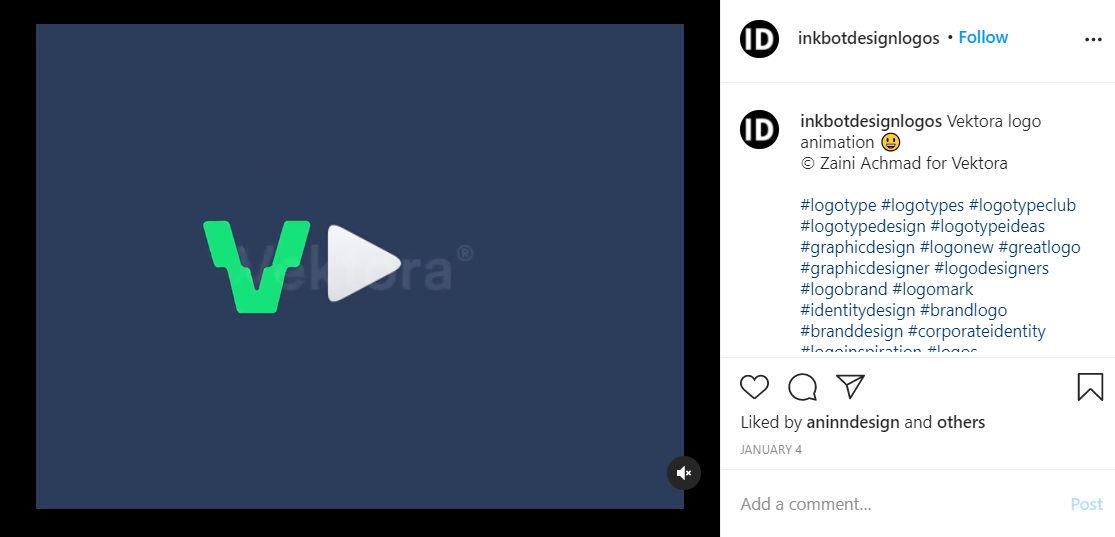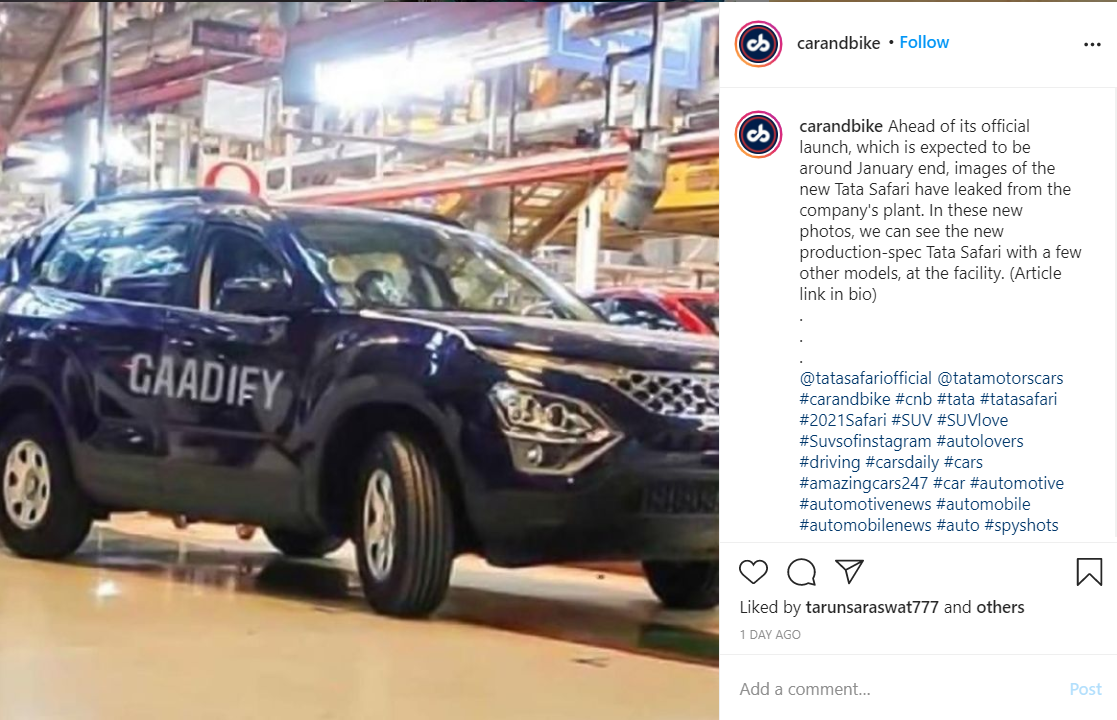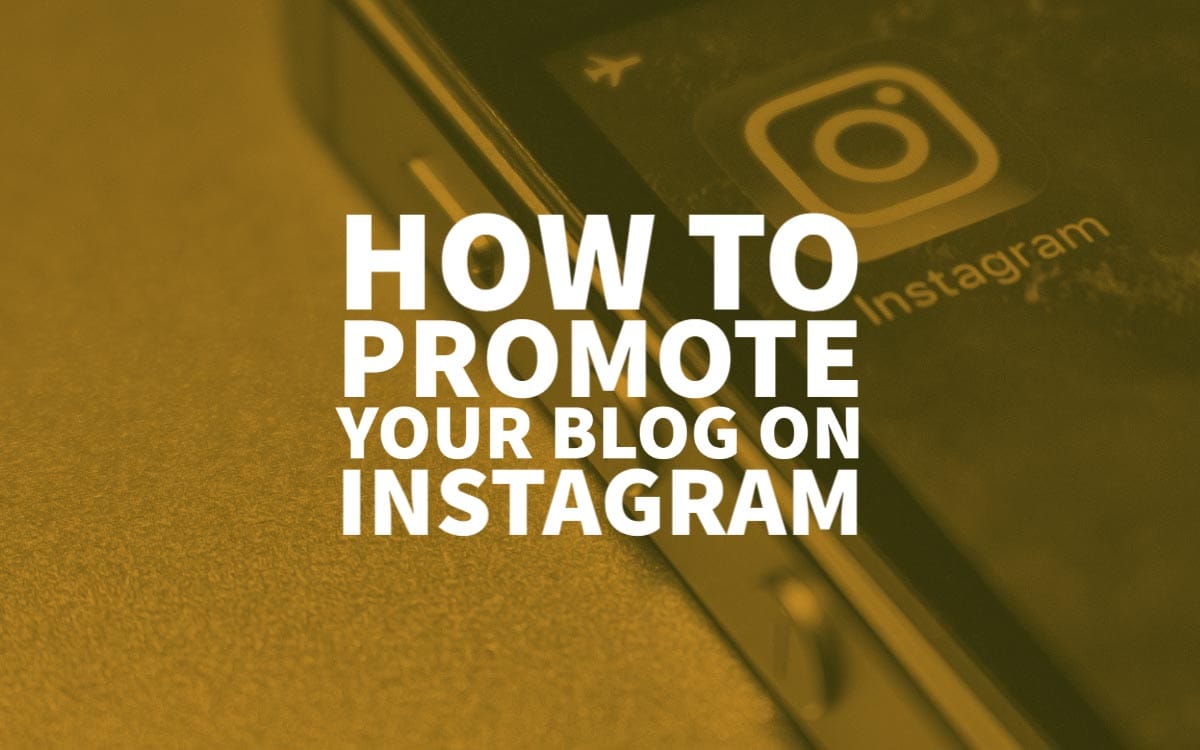
21 Jan How to Promote your Blog on Instagram
How to Promote your Blog on Instagram
More than 100 blog posts got published in the time it took you to read this sentence.
It is estimated that there are over 500 million blogs out there, churning more than 2 million posts each day.
Less than 10% of these blogs make any money at all.
It is one thing to start a blog. But bringing traffic to it on a sustainable basis, and monetising this asset is a whole new beast altogether.
Now, there are plenty of different ways to bring traffic to promote your blog. SEO is one of the most coveted traffic sources.
But here is the thing – there are only 10 spots on the first page of any Google Search result while there are literally thousands of pages competing to get in.
It takes a lot of work to make it to the top of Google.
Social media platforms like Facebook, Twitter, and LinkedIn have emerged as lucrative alternate sources to bring in a steady stream of traffic to your blog.
Not Instagram, though.
Why? Because unlike these other social media channels, Instagram does not permit users to link out to other websites from their posts. The only place you can link out to is from the bio section.

This does not mean Instagram cannot serve as a great source of inbound traffic to promote your blog.
In this article, we are going to look at the various ways a blog can attract visitors from Instagram.
Is Instagram for everyone?
First things first – Instagram is a highly visual medium. This means that if you run a fashion blog or write about delicious food, you have plenty of ways to get your posts viral on Instagram.
But what about the rest of us? What about blogs on fixing an AC or getting a small business loan?
At the outset, these topics do not readily fit in the Instagram mould. However, this should not be the deciding factor.
Instead, as long as your target audience is active on Instagram, this is a viable source of blog traffic.
Here are some stats:
- Over 75% of people in the 18-24 year age group are on Instagram
- Over 47% of people in the 30-49 year age group are on Instagram
With over 1 billion active users, this means that regardless of which industry you cater to, there is always a good chunk of people in your target group who are active on Instagram.
In other words, Instagram is a great source of blog traffic regardless of your industry.
Types of content on Instagram
There are a number of different content formats available on Instagram. Depending on your industry and your marketing strategy, you may want to focus on one or more of these different content types.
Images
These are, by far, the most popular content formats on Instagram. The images you post on Instagram do not have to necessarily be photos of people and places.
You could also experiment with carousels which are basically a series of images posted under one caption.
Videos
For bloggers who do not have visually appealing images to post, IGTV Videos are a great source of traffic.

Instagram lets its users upload videos that are anywhere between 1 and 15 minutes long. This duration is higher for verified users.
Stories
The popularity of Snapchat has spawned a rise in the popularity of fleeting content. With Instagram Stories, you could post images and videos that disappear from the platform in 24 hours.
There are a few limitations here – unlike regular submissions, you cannot add a caption to your submission, and hashtags are limited to 10 per story.
Reels
This is one of the most recent additions to Instagram. These are short 15-second video clips where you could experiment with different types of videos. Unlike Stories, content you post on Reels does not disappear and is archived permanently under the Reels tab.
Instagram Live
Instagram Live is a great way to build a following and engage with your audience. Here, you stream yourself live and can take questions from your followers or stream an event directly on to Instagram.
Now, it is important to know that this only covers the free traffic acquisition formats. In addition to what you have above, a blogger interested in traffic may also look at Instagram advertising.
If you have an advertising budget, you could experiment with a number of different formats like
- Stories ads
- Photo ads
- Carousel ads
- Video ads
- IGTV ads
- Collection ads
- Explore ads, and
- Instagram Shopping ads
Each of these different formats come with their own bunch of Call to Actions (CTAs) and supporting objectives.
But one binding factor that differentiates ads from other regular posts on Instagram is that you are allowed to link out to your blog post directly from the CTA button.
This can dramatically increase the number of people who visit your blog from Instagram.
Now that you have a good understanding of the kind of content you can post on Instagram, along with the limitations on each of them, you can build a strategy that works for your specific blogging category.
Start with the objectives
Sure, who doesn’t love traffic?
But here is the thing – your marketing campaigns do not always have to be about acquiring traffic.
A platform like Instagram could also be used to build a brand around your blog.
There are a few advantages to this. For one, as a brand, you could potentially establish yourself as an authority in the industry. This builds trust and loyalty that is very important, especially if you are a B2B or small business owner.
This, in turn, drives more direct visits to your blog and also helps you acquire a lot of natural backlinks to your website which contributes to a higher search engine presence over time.
But again, whether you want traffic from Instagram, or want to build a brand depends on what you want to do with your blog in the first place.
Do you want to make money off ads? Do you plan on setting up an online shop to sell merchandise? Or, is your blog a way for you to gain consulting or speaking gigs?
Answers to these questions can help you figure out the answer to what you want your blog to be, and how you could use Instagram to meet these objectives.
For example, let’s say you are a food blogger driving traffic to your website.
You could share videos and Reels of the various things you cook – this builds interest and engagement among followers. You could drive further engagement and build a following with photos.
And when you have published a new blog, you could drive visitors with posts like these.

This is a very effective strategy because simply posting blog cover photos to drive traffic is not going to work. Your followers can get disengaged and your posts stop showing up in their feed.
With a healthy mix of engaging and traffic-driving posts, you make sure that you build a following while getting a steady stream of visitors to promote your blog at the same time.
On the other hand, if you are a web designer looking for ways to drive traffic to your blog, you could share samples from your portfolio as images on Instagram, and also showcase short videos of the designing process, either as videos or as Reels.
Now, compare this with another blog like TechCrunch. Their posts are seldom about driving traffic, but instead about sharing news stories that their audience likes.

This post has no CTA or mention of the article link. However, if you are a TechCrunch reader, you may follow their account merely to be updated on stories even when you are not actively logging in to their blog.
Such stories tend to bring inactive users back to promote your blog.
Invest in content production
On Instagram, you compete with content produced by your follower’s friends and family; not to mention the other brands they love and engage with.
The only way to stand out from the crowd is by producing something unique and valuable that your followers do not get elsewhere.
Unfortunately, unlike a medium like Twitter, you cannot simply come up with a short 280 character message and be done with it. Instagram is a visual medium, and the quality of content you produce plays a definitive role in how it is received by your followers.
If you are an individual with a blog, you could make use of free resources like Canva to come up with something unique. You could also host Instagram Live sessions to talk about your subject and promote your blog.
Business owners with a budget to spare may however consider working with a graphic design firm to produce assets that they can deploy for their IG marketing campaigns.
You will need a good strategy to succeed at this, though. Here is what works:
- Prepare a content calendar for the upcoming quarter and share it with your design agency
- They will be able to advise you on your brand strategy and how this can be accentuated with design.
- Keep your design firm in sync with your content progress so that you can share all the studies, reports, charts, and other materials you use to publish content.
- This way, your agency will be able to produce top-quality content not just for Instagram, but also for your blog.
If you plan on producing content for IGTV, Reels, and Instagram Live, invest in a good quality microphone, camera, and video editing tools. These tools pay for themselves over time with the higher ROI you see from your Instagram campaigns.
Establish an inbound traffic process
Earlier in this article, I mentioned how blog traffic is not necessarily the sole objective of every marketing campaign.
Now, on Instagram, your objective may either be to drive your followers from the IG post to your blog, or to build visibility that results in direct visits to your blog.
Either way, you will need to establish a process that can help you execute your plan on a predictable basis.
This is what you do.
Step 1: Start with a blog content calendar so that you know what is coming over the next several weeks. Space out your posts by a couple of weeks each so that you have enough time to aggressively promote each of these posts.
Step 2: Work out an Instagram marketing plan that revolves around this content. For instance, if you run an automotive blog and have a new launch coming up in a month’s time, make a plan on what you should be posting before, during, and after the launch.
Depending on your industry, you may have such a plan days, weeks, or even months in advance.
For instance, prior to the launch day, you can schedule several Instagram posts that showcase rumored features and leaked pictures that help build buzz around the launch. There are a number of online tools you could pick from for this purpose.
The objective of these posts is to drive up engagement prior to the launch, although you could also drive traffic from these posts.

Similarly, you could plan posts for during the launch or after it well in advance so that your design team has enough time to produce top quality content that will drive up views to your blog.
Step 3: Once you have all the content ready for deployment, schedule them for publishing in advance. For maximum engagement, run periodic experiments to figure the best time to post on Instagram for your specific audience.
Step 4: If you are a multi-person team, make it a point for someone to be around to engage with comments on your Instagram posts. This drives up engagement further, thus helping with visibility, and therefore more traffic to your blog.
In addition to these steps above, it is highly recommended to work on influencer outreach. Regardless of your industry, you are likely to have Instagrammers from your industry who enjoy a good following on the platform.
Partner with these influencers to help you promote your blog. This does not always require you to dip into your advertising budget. A lot of influencers are also happy with barters where you return the favor in a mutually beneficial way.
For example, you could work out a deal where they help you spread the word about your blog in exchange for an advertising banner on your blog linking to their website or affiliate link.
Be consistent
Success with Instagram does not happen overnight. It takes several months of consistent effort to build engagement, followers, and subsequently, the authority that results in traffic and leads to your blog.
While the strategies mentioned in this article are tried and tested, it is a good idea to experiment with other strategies to find what works, and what doesn’t to promote your blog or industry.
As with every other facet of marketing, make it a point to track and analyze each campaign so that you could tweak them and build a potent traffic source over time.



